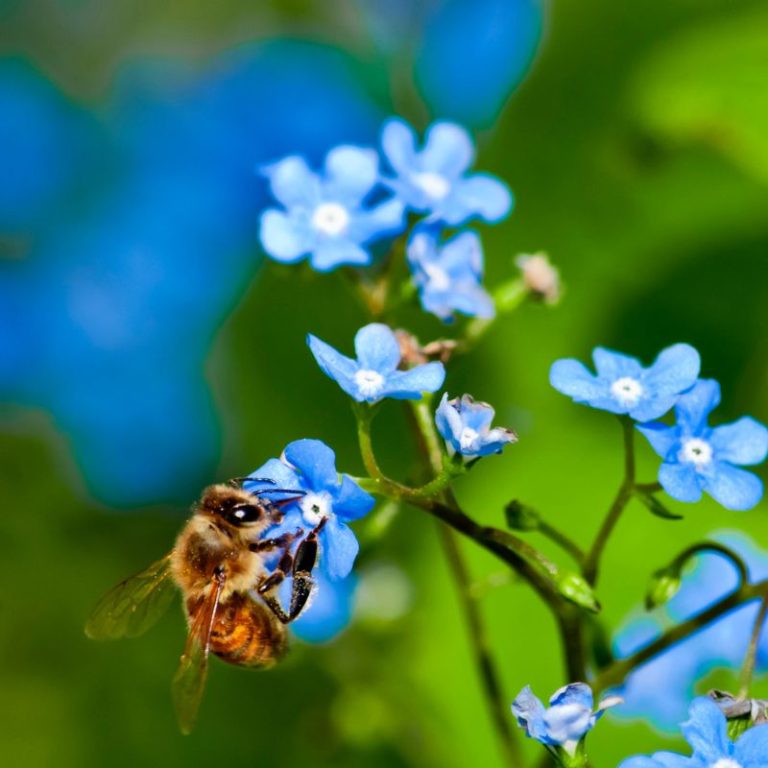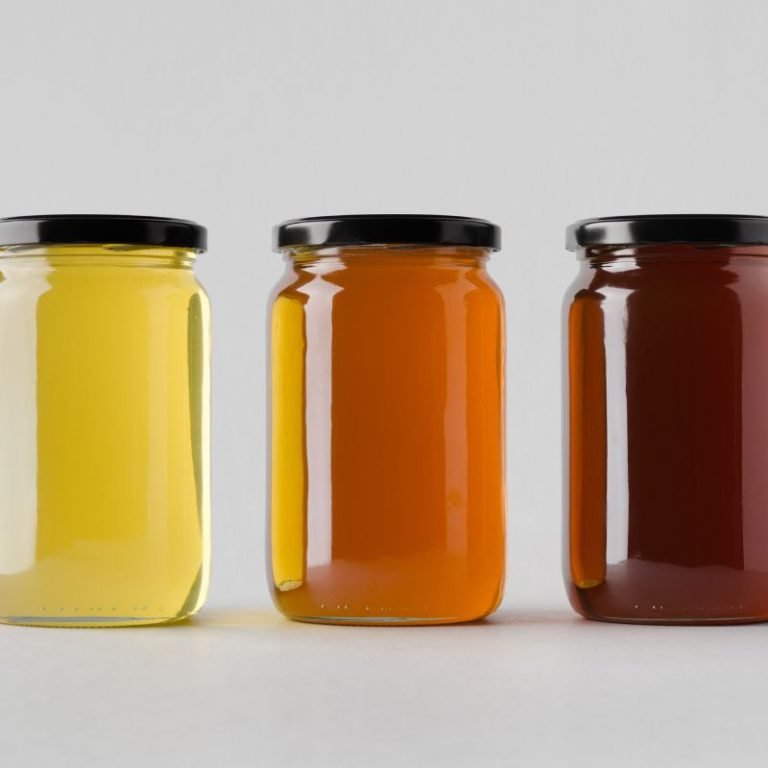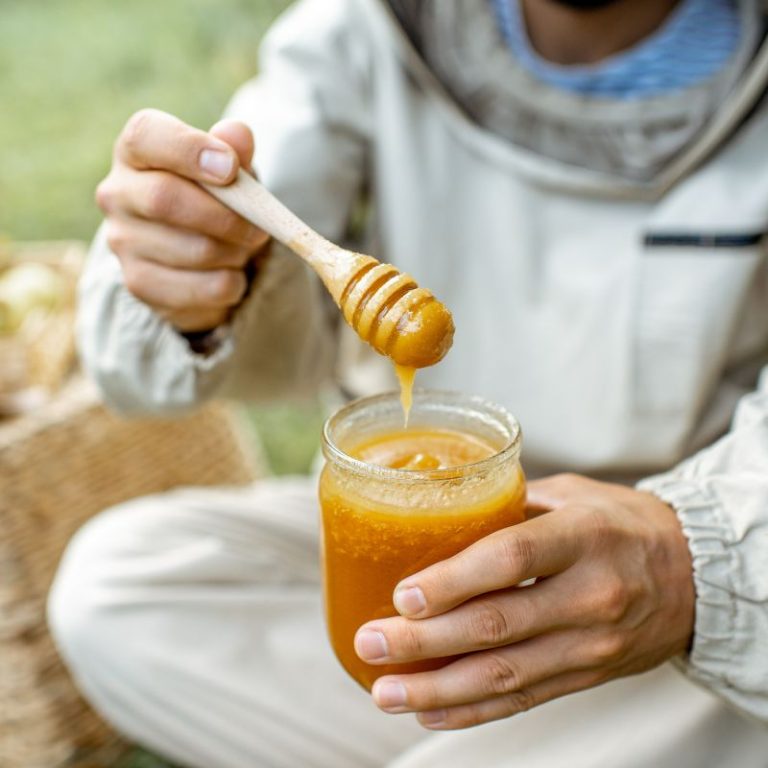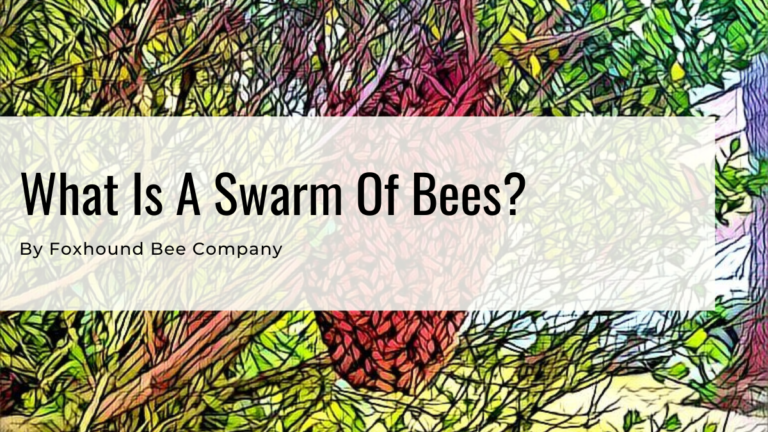If you’ve ever visited your local farmer’s market or supermarket in search of honey, you may have noticed that it comes in several varieties. Most notably, honey is available in a plethora of colors and shades. But what you won’t find in the store is an explanation of what those colors mean. And that is more important to your purchase decision than you think.
Table of Contents

If you’ve ever visited your local farmer’s market or supermarket in search of honey, you may have noticed that it comes in several varieties. Most notably, honey is available in a plethora of colors and shades. But what you won’t find in the store is an explanation of what those colors mean. And that is more important to your purchase decision than you think.
That’s because a honey’s color correlates somewhat with its taste. So, you need to know the difference if you want to buy honey that will have the flavor you expect. To help, here’s a guide to honey colours where we will talk about light honey, dark honey and everything in between.
We’ll discuss what gives honey its color, how that relates to its flavor, the seven USDA-certified color categories, and groups. If that sounds sweet to you, let’s get started.
What is really fascinating is the bees will create a wide variety of honey colors. These colors all derive from the type of nectar they forage on. There is even white honey that is completely clear, it actually looks like water in a jar, but it still has its characteristically thick and sweet texture.
Plants produce their nectar, and bees buzz over to the flowering plants to remove the nectar and bring it back to the colony. If the bees forage on various plants that are all blooming, this is wildflower honey. If the nectar source is 51% or more from the same type of plant, then it can be called a variety like sage honey, orange blossom or tupelo honey. Read more about nectar flow.
What Creates The Color Of Honey?

If you didn’t already know, honey bees produce honey harvested by beekeepers. But they don’t create it out of thin air. It results from a chemical reaction between enzymes in a bee’s honey stomach (yes, that’s a real thing) and the nectar they collect from various flowers in their environment. That reaction changes the pH of the nectar and its chemical composition to better suit long-term storage in a honeycomb.
Over time, the stored liquid loses most of its water content to evaporation, resulting in the thick honey most familiar to consumers. But the color — and therefore flavor — of that honey depends almost entirely on the flowers and pollen the bee visit and collect. Even light honey carries minerals and other compounds found in that nectar that create the color we see in our honey.
But that’s not the only factor that controls honey’s color. Storage conditions also play a role. For example, light-colored honey stored at high temperatures will darken its color. This darkening process can take years, but it will have a noticeably different flavor from the first teaspoon to last.
And there are some human interventions that cause the change of color in honey. Read more about “Why Would I Feed My Bees Green Food Coloring”.
How Honey Color Relates To Taste

Generally speaking, light honey will have a milder, more delicate taste. Most clover honey is categorized as white or light honey. Conversely, darker honey like buckwheat honey tends to have a bolder and earthy flavor. But as with anything else, there are exceptions to those rules. Certain types of nectar and pollen will yield dark honey with a mild taste.
Bees rarely make monofloral honey. That is to say, bees collect nectar and pollen from a variety of sources to create their honey. Beekeepers label their honey by the predominant source of nectar and pollen the bees collect. Goldenrod pollen can darken a light clover honey. So, it’s not always a good idea to judge a honey’s flavor solely by how it looks.
Organic honey is another variation that is based on the source of the flowers the bees collect their nectar. For honey to be organic, the bees must forage on only organic flowers. This can be difficult to do, but you should read our blog called “The Truth About Organic Honey” to learn more.
Instead, it’s a better idea to get to know the flower varieties commonly used to make honey. Each will result in a distinctive honey flavor profile and color. To be clear orange blossom honey won’t taste like fresh from the tree oranges. But the honey will have a more floral and acidic taste than earthy buckwheat honey.
Blends of multiple flowers will result in a mixture of those flowers’ flavors in the honey they contribute to making. Once you get to know the flowers involved, you can search for honey that will have the exact taste you’re craving.
The 7 Honey Color Categories

Out in the real world, of course, it won’t always be possible to figure out exactly which flowers went into making the honey you find in the store. So it is helpful to know the official USDA color categories used by honey producers to grade their products. They should give you a reasonable idea of how the honey you buy will taste.
The USDA honey color categories depend on a continuous grading system known as the Pfund scale. To grade their honey, producers pour it into a wedge-shaped container colored from light to dark. And that’s where things get complicated.
To develop a Pfund rating, the producer measures the distance between one end of the wedge and where the honey matches the glass color. The resulting distance, in millimeters, is the honey’s Pfund grade.
Traditionally, light honey is sought after more than dark honey. There is likely a lot that goes into that, but the honey color is a personal preference. Dark honey should not be considered poor honey, just like light amber or other colored honey does not mean it is “better”.
Those grades correspond to the 7 USDA honey color categories, as follows:
- Water White – <9 Pfund
- Extra White – 9-17 Pfund
- White – 18-34 Pfund
- Extra Light Amber – 35-50 Pfund
- Light Amber – 51-85 Pfund
- Amber – 86-114 Pfund
- Dark Amber – >114 Pfund
You might find the USDA grade listed on the commercial honey containers you see at the store. However, most local honey producers at farmers’ markets will not have this USDA grading information. Honey producers don’t always add this scale to their honey.
But beware — large honey producers produce blended honey from multiple sources. They claim it is to help produce consistent flavor and color. But some investigations have shown that some commercial honey producers might also be misleading consumers in a cost-cutting strategy where they blend the honey with cheaper ingredients like sugar syrup and water. This process has been dubbed “Honey Laundering”
So, if you’re looking for honey with a consistent taste, commercial is the way to go. However, it might not be 100% honey, even if the label claims it is.
If you want a better grantee that the honey on your table is actually just honey, buy local. There will be some small variance in flavor and taste, but you’ll know the honey wasn’t adulterated on its way to your table.
Flavor Groups
Since honey’s flavor correlates to the plant’s nectar that the bees gather, we should look over some of the group characteristics. These groups have hundreds of minor floral sources. While this is a shortlist of floral varieties of each honey group, you can read the USDA’s Extracted Honey Grading Manual for more information.
These groups are based on personal preference as consumers have a wide variety of flavors they find attractive and unnatractive. People consume honey for all types of reasons so what may work well for one person using it for baking may not suit the flavor a tea drinker may want.
Group No. 1 – Honey Having A Desirable Flavor:
Some floral varieties in Group No 1. include Legumes, White Clover, Sweet Clover, Alsike Clover, Alfalfa, Vetch, Orange, Sage, Raspberry, Cotton and Wild Cherry. Bees typically produce light-colored honey when they are sourcing their nectar and pollen from these plants’ flowers. The honey also tends to be more palatable with a delicate or mild flavor.
Group No. 2 – Honey Having A Distinct Flavor
This group’s floral varieties include Aster, Buck Wheat, Horseming, Tulip Poplar, Mangrove, Peppermint, Dandelion, and Thyme. These varieties tend produce a darker shade of honey amber in color and have distinctive flavors. These honey varieties tend to be favored in the regions they are produced but disliked by many people who are not from that region.

Group No. 3 – Honey That Is Least Desirable Or Even Unpalatable
This group is composed of Avocado, Bitterweed, Cantaloupe, Carrot, Cactus, Cucumber, Eucalyptus, Mustard, Onion, and Tar weed. These honey sources tend produce a deep dark colored honey and have a strong distinct flavor that most people find unpalatable. Honey from these sources is normally blended with honey from other groups to make it more palatable. This darker honey is typically called baker grade as it is used in the baking industry to make commercial quality foods.
Does Honey Keep Its Color?

No, honey can change colors after harvesting and processing. Light-colored clover honey, harvested in the spring can turn dark amber if stored in warm climate conditions. The formerly light honey turned into amber or dark honey is still good honey. But the darker-colored honey will have a stronger taste than it did in its lighter-colored form.
Honey color will also change as it ages, even in a well-controlled environment. As raw honey ages, it loses moisture content and crystallizes. The honey crystals reflect more light and appear lighter in color. This process has little effect on the flavor other than to make it sweeter.
If you are asking yourself, “What makes honey dark in color?”, it can either happen naturally because of the plants the bees foraged from. Or it can happen naturally as honey ages. Over time, honey will get darker. Even in a sealed, air tight honey jar.
There is a funny thing that happened a few years ago where beekeepers had their bees in an area where they were making wildflower honey when the beekeepers started finding some unusually colored honey in their hive. They thought they were getting clover honey or another lighter honey but when they went to harvest it, they were finding blue green honey in their bottles.
It turns out the bees were visiting a candy factory instead of the different plants in the area. They were taking the sugary runoff from the plant and storing it in their hive. I guess the bees didn’t get the memo they were suppose to go to plants, but not that plant.
Read more about “Where Should I Put My Beehive?”.
I’m not sure where that honey would fall on the found color grader, but its likely not where the beekeepers wanted their bees to go as a nectar source.
The Takeaway
Now that you know how honey color relates to its flavor and what the color categories on honey containers signify, you can make more informed honey purchasing decisions. Obviously, there’s a whole lot more than goes into what given honey will taste like besides its color. But the good news is that you can learn more about honey flavors in the most delicious way possible — by trying them yourself to find the varieties that you love.
Author Bio
Ck Harrington is a honey-loving content writer who appreciates the sweet work of bees and beekeepers. Ck uses honey to sweeten his coffee, as a topping on toast, and as a homeopathic complement to his antihistamine regiment. He’s also fond of eating honey by the spoonful simply for the joy of it (the allergies are only a justifiable excuse to eat more honey.)



